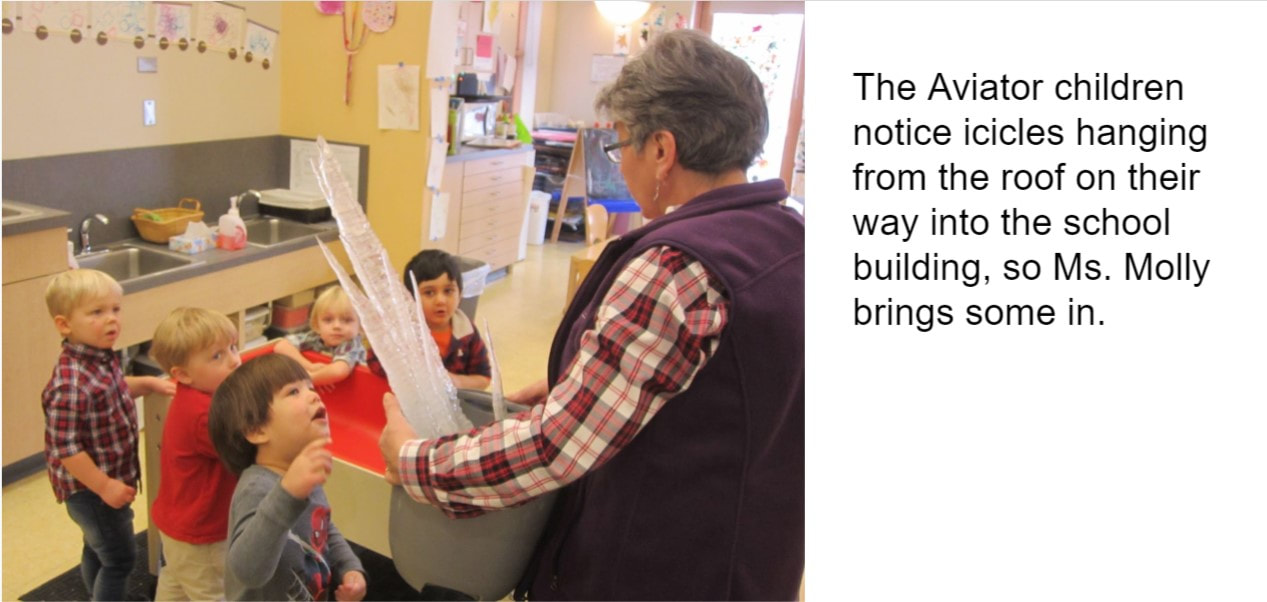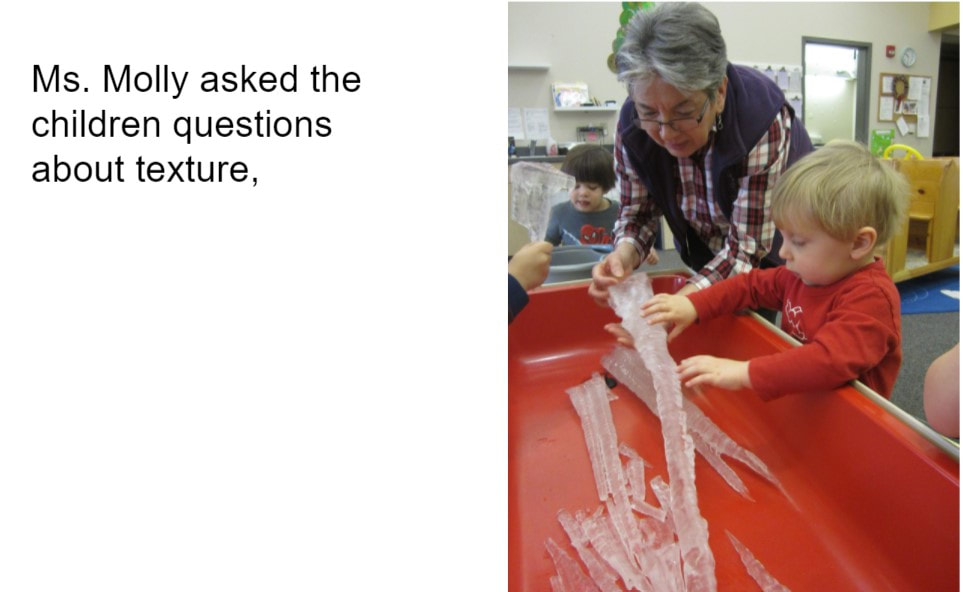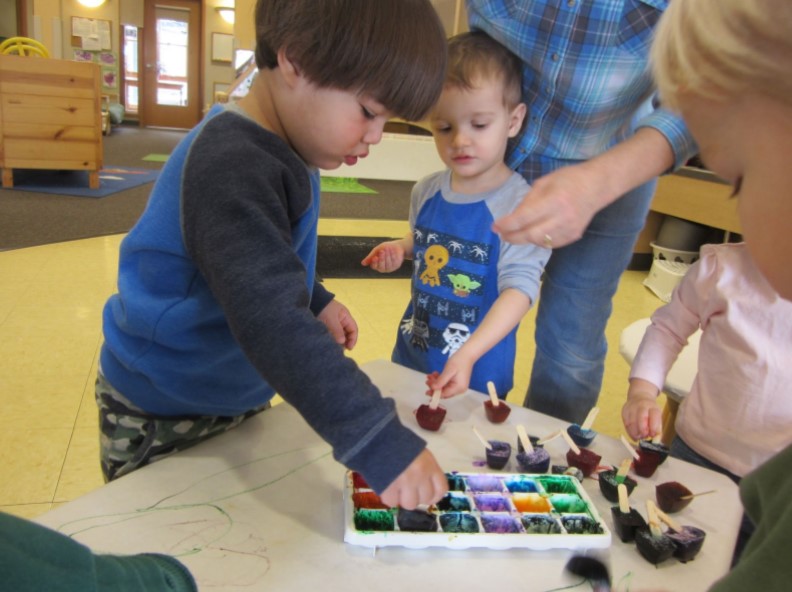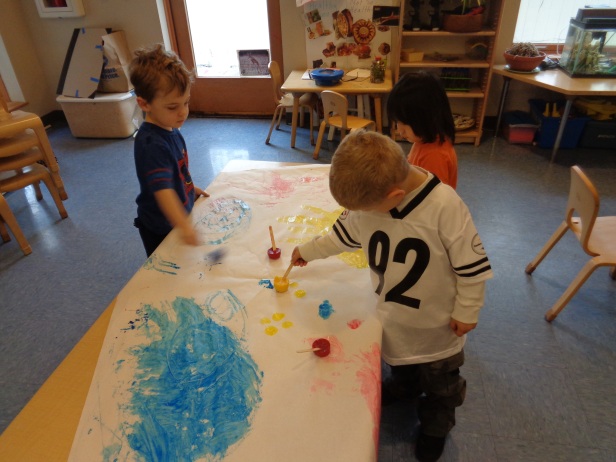Exploring Ice |
Classroom A: Toddlers 2-3
Classroom B: Preschool
The first time it snowed, the children became curious about how water made ice. The Explorer class decided to take a break from their investigation to follow the children's excitement and curiosity. They began by discussing with the teacher how ice is made. The class talked about how when water gets really cold, it freezes and turns into ice. The class filled up a bunch of balloons with water and put them outside in the cold to see if they would freeze. The class left them outside over the weekend.
After working with the ice balls and salt, the class decided to make ice paint. The children filled ice cube trays with a paint/water mixture. They put the ice cube trays in the freezer for a few days to allow the liquid to freeze. The children used the ice cubes to paint on paper. The children observed how they could mix the colors to make new colors. This mini-investigation lasted for a week and a half until the weather became warmer and the children returned to their original investigation.
The next week the children brought in a few of the balloons from outside and took off the rubber to reveal a frozen ball of ice. The children then used paint and paintbrushes to paint their ice balls. Some of the balloons were not frozen all the way through. The teacher and the children discussed why this happened. The class found that the snow that fell around the balloons had insulated them and that is why they did not freeze all the way through. While the children painted the ice balls, the class talked about how they were hollow and what that meant. After they painted a few of the balloons, the teacher introduced salt. The children painted the rest of the balls of ice with a paint/salt mixture and then observed how the salt made holes in the ice. The teachers and the children discussed how the salt melted the ice faster which is why we put salt on the ground when it is icy.























